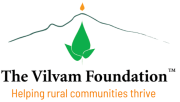Context
India is on the cusp of a major socio-economic transformation. It has come through a period of rapid growth in the last thirty years compared to its first forty years since independence. Now, challenges are mounting.
With around 26 per cent of the population in the age group 10-24 years, India’s youth bulge demands jobs, enterprises or both. Employment and entrepreneurship, in turn, ride on appropriate skills and education. As a labour-rich country, India’s growth model has to pay close attention to this opportunity.
The search for employment and “a better life” drives people away from rural to urban areas. There is a dependency on urban India or peri-urban areas for most things – better education, better health services, better livelihoods, better services, better entertainment and even better perceived well-being. A mark of success is moving to the city. India’s dynamic cities are hence magnets for its large rural population. Yet, on several parameters, our cities may be reaching the limits of their carrying capacity. Such relentless migration is not sustainable as at least 60% of the population lives in officially-defined rural areas, and by the end of the decade, more than 50% will continue to live in rural areas.
The movement of people from rural to urban areas also has many important intangible side effects. As youngsters move out in search of livelihoods, support systems for the elderly are lost, physical and mental well-being is affected. The rural economy is no longer a place for growth and innovation. The environment and commons are neglected. Culture and tradition no longer have anchors or participants.
Meaningful, inclusive growth and development have to therefore be dispersed and envelope rural India. Local, decentralized economies have to thrive, grow and be capable of supporting livelihoods and offering wholesome living conditions. The work of The Vilvam Foundation in rural Tamil Nadu is a small but important contribution to this complex, yet exciting task of building a prosperous, happy and self-sustaining India.
Ground-up efforts are necessary as we all try and find solutions that help address these critical challenges; sometimes, they may even provide replicable templates that can inform policy-making.
LEARNINGS
The problems that people in rural India face are varied in nature, but they almost all stem from rapid change and the resultant stress in coping with those changes. In this disorganized transition to an unfamiliar world, many fail to make it and are trapped in vicious cycles of debt, loss of identity, loss of community and alcoholism. Livelihoods, children’s education, health and well-being suffer greatly.
Within this context, setting meaningful and inclusive development goals for a rural community need to be approached with respect for the past and a practical embrace of the future. This inclusive growth MANDATES not just the creation of institutions and opportunities but a BRIDGE for communities to help with the transition to learn and participate effectively. Inclusive growth should also necessarily look at creating agency and self-reliance. Finally, inclusive growth for India needs to think local and BE local for long-term sustainability.
Focus is required on education, health, enhancing local employment opportunities, kindling entrepreneurship and innovation, stemming urban migration, taking care of the commons and reviving a sense of pride in one’s culture, knowledge systems and community. Development has to TRULY look at and involve all stakeholders in the rural economy.
Training rural children and youth to understand, appreciate and respect the potential of the land they live in, and helping individuals earn their livelihoods and focus on their well being, while preserving what they are blessed with for future generations is the purpose of The Vilvam Foundation. This will generate balanced and sustainable development both environmentally and economically. Making rural areas economically and environmentally viable will in turn enable urban India to rejuvenate itself.
THE WORK
The pillars of Vilvam Foundation’s work – education, culture, livelihood, health and environment – are organized along these lines. Vilvam Foundation guides young children to do better academically and in life, skills youth, fosters entrepreneurship and bridges employability gaps, equips individuals with the mental and physical health to be productive responsible citizens.
Simultaneously there is rigorous focus to help inculcate in them an appreciation, sensitivity and respect for their environment and each other, imbuing them with responsibility for its nourishment, and engendering an appreciation for their rich and glorious cultural heritage. We do this by
- Putting effort into designing systems that help rural communities build the capabilities required to interface with the modern marketplace through interventions in the spheres of Education and Livelihood.
- Putting effort into stitching together the frayed edges of a harmonic existence through interventions in the sphere of Health and Environment.
- Putting effort into remembering our authentic selves as a precondition to imagining an authentic future through interventions in the Cultural space.
These models are being run in collaboration with panchayats and stakeholders of all age groups, with the ultimate goal that they can be reproduced across the district. Growth and subsequent change do not have to be disruptive. Rural communities can learn new skills, find new livelihoods, stay healthy and debt-free, restore harmony in their households, and ensure their children get a modern education while retaining their connection to their deep cultural values, each other and the Earth.
